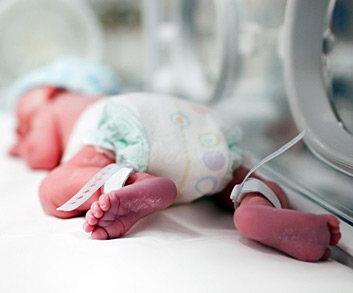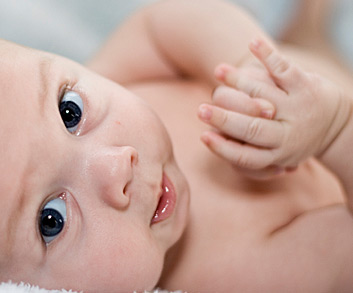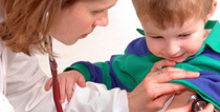Internal mini form
Contact Us Today
“Is Cerebral Palsy genetic? Does Cerebral Palsy run in the family? Is it familial? Is it hereditary?” “Is Cerebral Palsy congenital?” “Can Cerebral Palsy be acquired?” “How can a person be labeled as having 'No CP' even though he or she is being treated for Cerebral Palsy?” These are good questions: let’s explore.
Is Cerebral Palsy genetic?
These are good questions that we receive in our call center quite regularly as parents strive to learn what caused their child’s Cerebral Palsy. Most parents want to know whether any future pregnancies will result in Cerebral Palsy.
With the advancement of neuroimaging technology, researchers have been able to study brain injury and brain malformation to understand how genetic mutations, genetic deletions, risk factors, and health status interact to create causal pathways toward abnormal brain development. The research enables scientists to identify risk factors, prevention measures, and surgical techniques for Cerebral Palsy.
Many organizations are working to reduce the occurrence of Cerebral Palsy; understanding when, how and why brain damage occurs during various stages of development is crucial to achieving that goal.
According to the United Cerebral Palsy Research and Educational Foundation, 70% of brain damage that causes Cerebral Palsy occurs prior to birth, mostly in the second and third pregnancy trimesters. Twenty percent occurs during the birthing period while 10% occurs during the first two years of life while the brain is still forming. The industry has identified four key terms to help discern “when” the brain damage occurs.
Genetic predisposition
Parents of a child recently diagnosed with Cerebral Palsy ask “Is Cerebral Palsy genetic?” or “Is Cerebral Palsy hereditary?”
While Cerebral Palsy is not a hereditary condition, researchers have discovered that hereditary factors can predispose an individual to Cerebral Palsy. Although a specific genetic disorder does not directly cause Cerebral Palsy, genetic influences can cause small effects on many genes. Genetic influences can also develop gene-to-gene interactions or form complex interactions with multiple environmental influences.
This interaction is called “complex inheritance” or “multifactorial inheritance” and may explain why Cerebral Palsy can “run in the family,” a condition clinically referred to as “familial recurrence.”
Some genetic contributions to obstetric risk factors include preterm birth, placental abruption, fetal growth restriction, chorioamnionitis, preeclampsia, and breech presentations. One study, published in the Journal of Child Neurology and titled “Genetic factors in athetoid Cerebral Palsy” identified familial recurrence of athetoid Cerebral Palsy typically associated with spasticity, microcephaly, intellectual impairment, and seizures as an autosomal-recessive or X-linked-recessive inheritance.
Even still, some genetic brain disorders are caused by random gene mutations. Environmental exposure to toxins, such as cigarette smoke or pesticides, can cause spontaneous gene mutation.
Some genetic defects contribute to brain malformations, which miswire nerve cell connections and lead to Cerebral Palsy. There are also cases of dysfunctional hereditary genes, which prevent full development of a healthy brain.
Although familial Cerebral Palsy only accounts for approximately 1.6% of all Cerebral Palsy cases, a parent who has a child diagnosed with Cerebral Palsy has an increased risk of having a second child develop the condition. In these cases, molecular tests can identify the susceptible gene.
Congenital Cerebral Palsy
As parents learn about their child’s Cerebral Palsy, they learn that the timing of the brain damage can impact the severity and type of Cerebral Palsy a child develops. Parents should ask their child’s doctor, “Is my child’s Cerebral Palsy congenital or did my child acquire Cerebral Palsy?"
Timing – when the brain damage occurs to the developing brain – is an important component of a Cerebral Palsy diagnosis. The terminology “congenital” and “acquired” refer to whether the baby was born with Cerebral Palsy or acquired Cerebral Palsy after birth.
When a child has congenital Cerebral Palsy, it means events that occurred during pregnancy or at birth can cause congenital Cerebral Palsy. Although congenital Cerebral Palsy may not be diagnosed immediately, the condition exists at birth and can be detected months or years later. Seventy percent of all Cerebral Palsy diagnoses are diagnosed as congenital.
A child who has a genetic predisposition to Cerebral Palsy can be labeled as having congenital Cerebral Palsy if the genetic interaction occurred while the brain was developing.
Causes of congenital Cerebral Palsy include oxygen deprivation, complex pregnancies, medical malpractice, preterm birth, low birth weight, growth restriction, sexually transmitted disease, birth positioning, placental complications, fetal strokes, bleeding in the brain, poorly treated health conditions, trauma to the developing fetus and exposure to toxins during critical stages of development. Infections and fevers also contribute to the occurrence of congenital Cerebral Palsy.
With congenital Cerebral Palsy, it is not always easy to identify the cause.
Acquired Cerebral Palsy
The brain continues to develop after birth. While experts debate whether it takes two years, five years or somewhere in between for the brain to develop fully, there is disagreement among doctors about whether acquired Cerebral Palsy begins at 28 days of life, or at the time the baby is born.
The key to understanding the difference between acquired Cerebral Palsy and congenital Cerebral Palsy is in identifying the actual cause and when it occurred. In cases of acquired Cerebral Palsy, it is believed the child was born without the condition, but acquired the brain damage before the brain fully developed. Acquired Cerebral Palsy is not inherited. Up to 10% of all cases of diagnosed Cerebral Palsy are acquired.
It is often easier to identify the actual cause in acquired Cerebral Palsy than it is in congenital Cerebral Palsy. Acquired Cerebral Palsy can be the direct result of brain infections, bacterial meningitis, viral encephalitis, accidents or injuries.
Acquired Cerebral Palsy can also result from head injury caused by a motor accident, a fall, a near-drowning experience, or abuse. Shaken baby syndrome can result in acquired Cerebral Palsy if the brain has not yet developed when the injury occurred.
No CP
A case is considered “No CP” if the brain injury occurs after the brain has fully developed — generally, after a child reaches his or her fifth birthday. In cases of No CP, signs of impairment similar to Cerebral Palsy are diagnosed, but the cause is classified by the type of injury that caused the brain damage – traumatic brain injury, shaken baby, or bacterial meningitis, for example.
While the case is clinically referred to as No CP, the child presenting with signs of Cerebral Palsy is still treated accordingly. The term No CP allows researchers to include cases of Cerebral Palsy acquired after birth, but discern between the types more readily. Some researchers prefer to exclude No CP cases from their studies altogether.
Cause: Clarifying terminology
Because the terminology used is so specific, yet remarkably similar, terms such as brain defect, brain malformation and brain lesion can seem confusing. It is helpful to know the difference between the terms when attempting to understand the cause of cerebral palsy.
Brain development begins shortly after conception. A relatively small number of cells divide and multiply into billions of cells. A small strip of tissue rolls into a neural tube. One end develops into the brain, the other into the spinal cord. Throughout, different types of cells form, group, and migrate to form various regions of the brain. The brain is considered fully developed two to five years after birth.
Brain defects are irregularities in the brain structure that typically cause impairment. Defects can occur from malformation, injury, illness or disease. The degree of impairment often is linked to the severity of damage. A brain sometimes compensates for defects, in essence, by “rewiring” to bypass or compensate for damaged areas. For this reason, beginning treatment as early as possible is typically recommended.
Brain malformations are defects that occur through abnormal development of the brain. Although defects can occur anytime during fetal development, in the first 20 weeks the infant is most vulnerable; any malformation that occurs while the neural tube is forming can have permanent consequences. Brain malformations may result in undeveloped areas, abnormal growth, malformation, or improper brain division into hemispheres and lobes.
Brain lesions are defects that occur from injury or disease. The cause of brain lesions during fetal development include bleeding in the brain, infections, toxins, asphyxia, and many others. Lesions typically result from an incident or event that causes brain tissue to die. Holes, which often fill with liquid, are left behind to form cysts.

Four types of brain injury or malformation that cause Cerebral Palsy
Cerebral Palsy is caused by brain injury or brain malformation that occurs before, during, or immediately after birth while the infant’s brain is under development. But how a brain injury affects a child’s motor functioning and intellectual abilities is highly dependent on the nature of a brain injury, where the damage occurs, and how severe it is.
Cause
Periventricular Leukomalacia
Damage to the white matter tissue in the brain
Periventricular Leukomalacia
Intraventricular Hemorrhage
Brain hemorrhage
Intraventricular Hemorrhage
Hypoxic-Ischemic Encephalopathy
Lack of oxygen to the brain, asphyxia, or intrapartum asphyxia
Hypoxic-Ischemic Encephalopathy
Cerebral Dysgenesis
Brain malformation or abnormal brain development.
Cerebral Dysgenesis

Were you or your child at risk – before, during or after your child’s birth?
Cerebral Palsy risk factors are events, substances or circumstances that increase the chances of a child developing Cerebral Palsy. They can be avoidable, or unavoidable. A risk factor does not ensure a child will develop Cerebral Palsy; it means chances are higher than if that risk factor was not present. Likewise, the absence of risk factors does not ensure that a child will not develop Cerebral Palsy. Have you been exposed to the following risk factors?
Cerebral Palsy Risk Factors
- Asphyxia and oxygen deprivation
- Blood type incompatibility or jaundice
- Complications of birth
- Infection
- Intrauterine growth restrictions
- Multiple births and infertility drugs
- Parental health and habits
- Placenta complications
- Premature birth
- Traumatic brain damage
Risk factors vs. risk factor causal pathways
A risk factor does not ensure a child will develop Cerebral Palsy; it means chances are higher than if that risk factor was not present. Likewise, the absence of risk factors does not ensure that a child will not develop Cerebral Palsy.
Risk Factors and Risk Factor Causal Pathways
The Cerebral Palsy Risk Factor Checklist
Any exposure to risk factors prior to conception and during pregnancy should be immediately discussed with a doctor in order to treat and minimize risk. The Cerebral Palsy Risk Factor Checklist helps parents determine if they may have been exposed to risk factors for Cerebral Palsy.
The Cerebral Palsy Risk Factor Checklist








